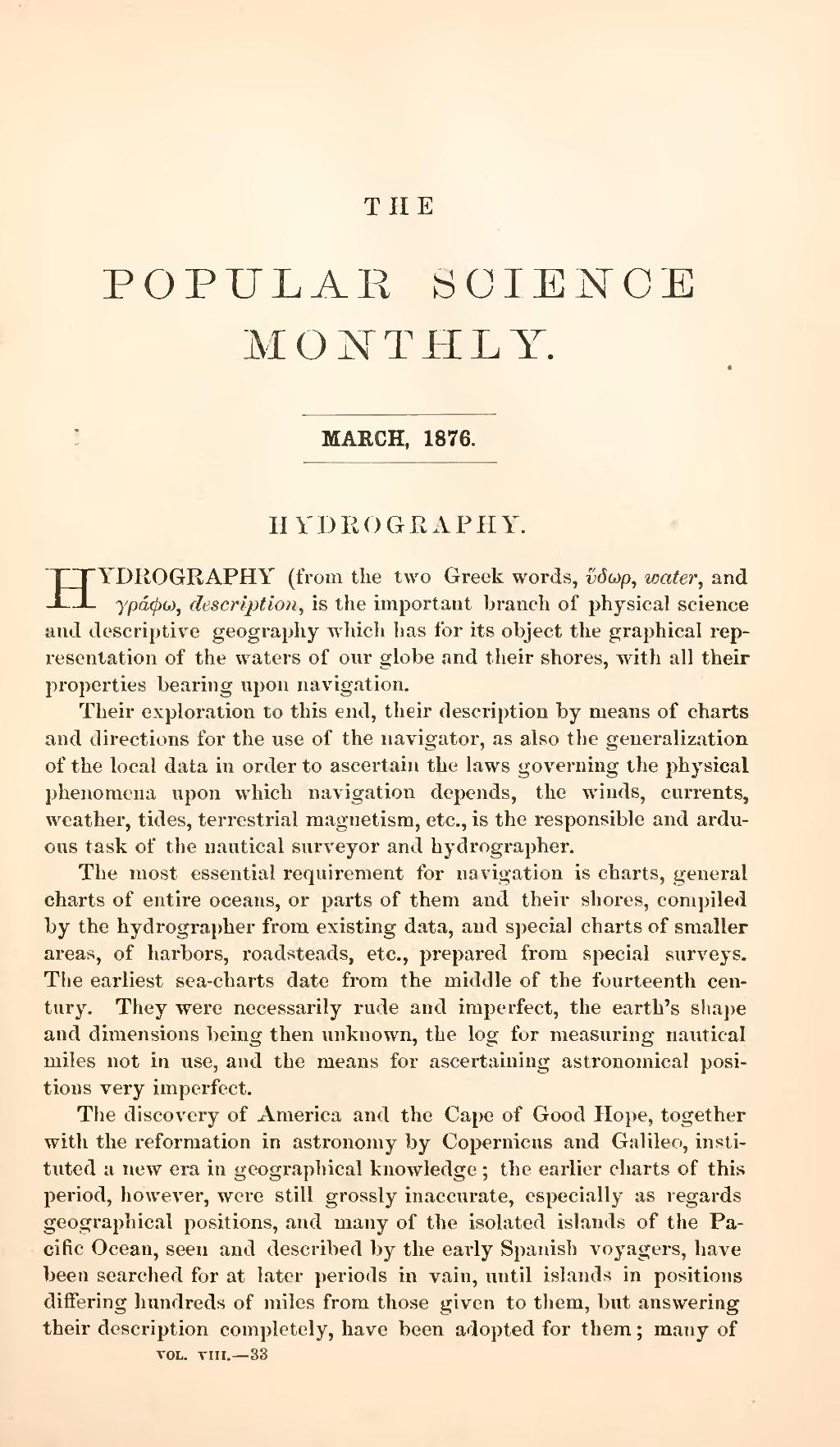THE
POPULAR SCIENCE
MONTHLY.
MARCH, 1876.
| HYDROGRAPHY. |
HYDROGRAPHY (from the two Greek words, ῦδωρ, water, and γράφω, description, is the important branch of physical science and descriptive geography which has for its object the graphical representation of the waters of our globe and their shores, with all their properties bearing upon navigation
Their exploration to this end, their description by means of charts and directions for the use of the navigator, as also the generalization of the local data in order to ascertain the laws governing the physical phenomena upon which navigation depends, the winds, currents, weather, tides, terrestrial magnetism, etc., is the responsible and arduous task of the nautical surveyor and hydrographer.
The most essential requirement for navigation is charts, general charts of entire oceans, or parts of them and their shores, compiled by the hydrographer from existing data, and special charts of smaller areas, of harbors, roadsteads, etc., prepared from special surveys. The earliest sea-charts date from the middle of the fourteenth century. They were necessarily rude and imperfect, the earth's shape and dimensions being then unknown, the log for measuring nautical miles not in use, and the means for ascertaining astronomical positions very imperfect.
The discovery of America and the Cape of Good Hope, together with the reformation in astronomy by Copernicus and Galileo, instituted a new era in geographical knowledge; the earlier charts of this period, however, were still grossly inaccurate, especially as regards geographical positions, and many of the isolated islands of the Pacific Ocean, seen and described by the early Spanish voyagers, have been searched for at later periods in vain, until islands in positions differing hundreds of miles from those given to them, but answering their description completely, have been adopted for them; many of

